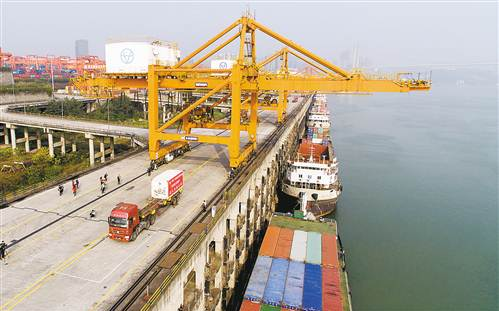Waterways bring Chongqing fresh beef
Sun Hui
Updated:2016-12-26
chinadaily.com.cn
Thirteen tons of fresh beef from Australia arrived at Chongqing Lianglu Cuntan Tariff Bonded Zone on Dec 22, through waterways which combine sea freight and river freight, pioneering a new mode of water transportation in China.
The construction of the Three Gorges Dam has made this new mode of shipping possible, as ships can now navigate the length of the Yangtze River through a system of ships lifts and locks.
Sea-going ships loaded with tons of fresh beef from YIBEEF Co, an Australian fresh beef importer, departed Australia’s Brisbane Port on Nov 26. The cargo remained packed and was shifted onto river boats at Shanghai Waigaoqiao Port before arriving in Chongqing via the Yangtze River.
 |
|
Thirteen tons of fresh beef from Australia get unloaded at the Chongqing Lianglu Cuntan Tariff Bonded Zone. [Photo/liangjiang.gov.cn] |
Gu Yi, president of YIBEEF Co, claimed that the whole freight process kept a better preservation temperature of 0 to 2 C and took less than a month, helping keep the beef fresh. The new mode of transportation cut down freight costs by around 50 percent compared to air freight.
The company planned to import 100,000 Australian live cattle through Chongqing port, saving logistics costs of around 100 million yuan ($14.4 million) with the new transportation mode of combined sea and river freight.
 |
|
The imported fresh beef is inspected by officials from Chongqing Customs and Chongqing Entry Exit Inspection and Quarantine Bureau. [Photo/liangjiang.gov.cn] |
It used to take two months for cargo from Australia to reach Chongqing, which was seldom a choice for long-distance freight, especially for time-sensitive products. But now, the new mode of water transportation allows fresh agricultural products and other time sensitive products to be shipped to Chongqing at a low cost, according to a manager from Chongqing Commerce Committee.
Edited by James Skinner
Video

John Edwards, the UK trade commissioner for China, praised Chongqing over its rise as a burgeoning center in intelligent manufacturing.





